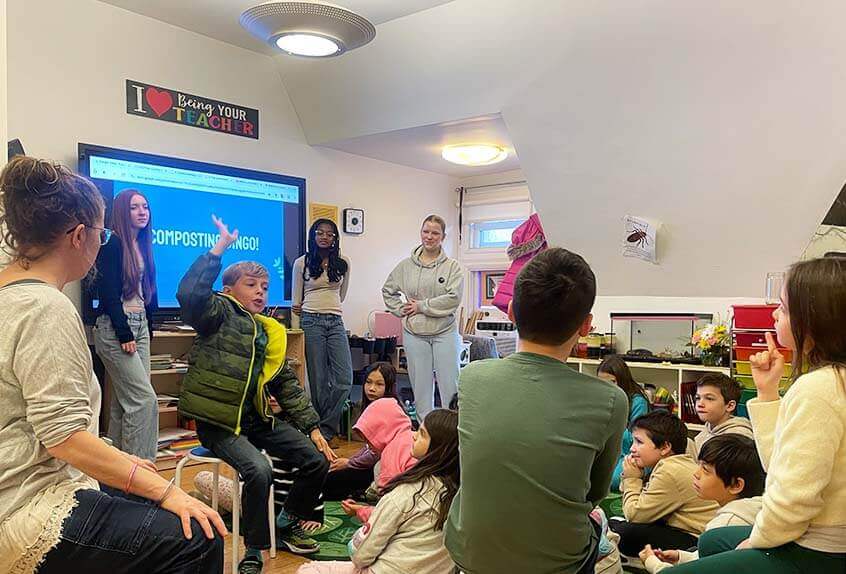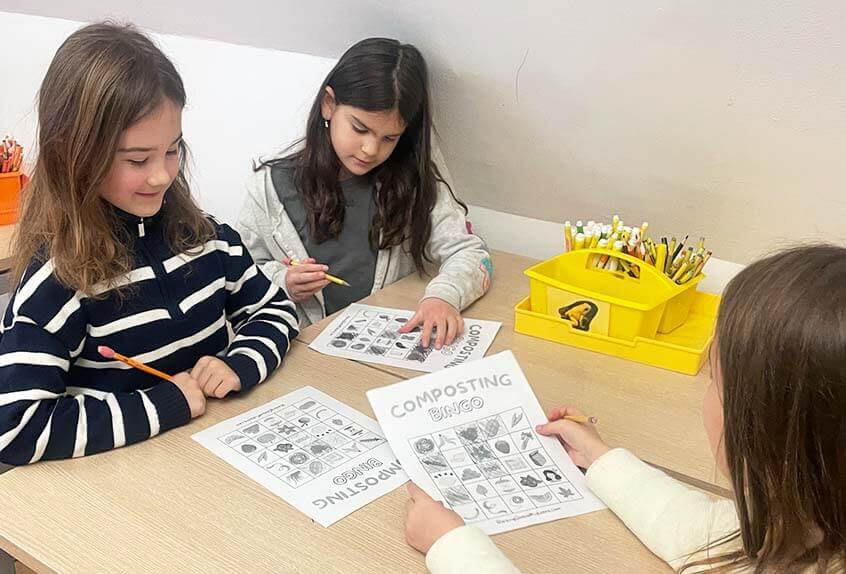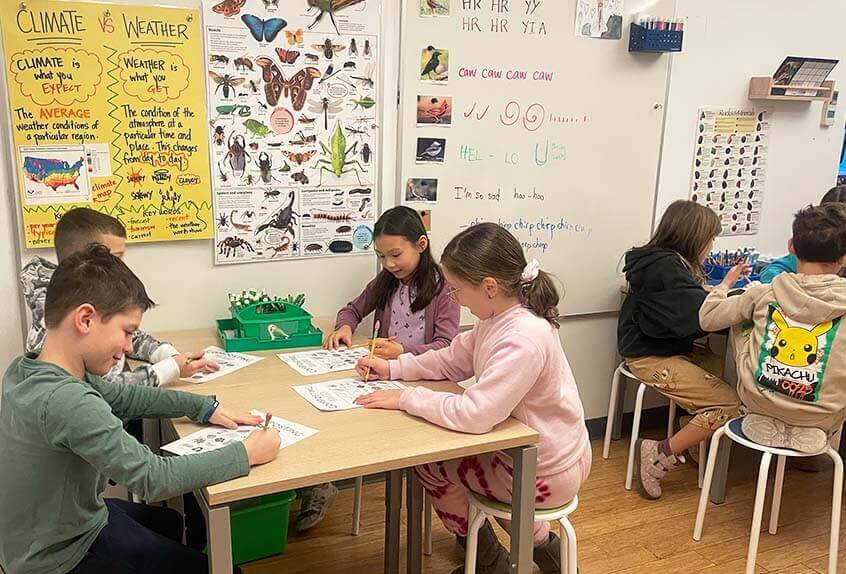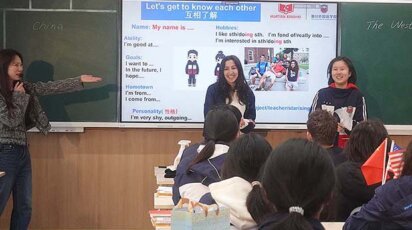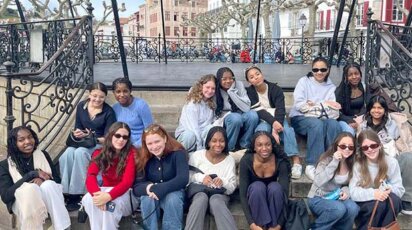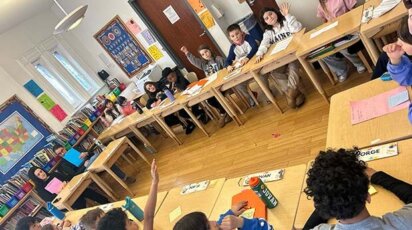News
Upper and Lower School Students Collaborate for Sustainability
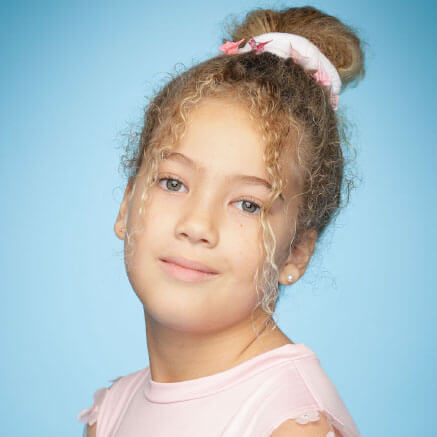
“We are trying to save the environment. It’s very hard, but step by step, everyone can do it.”
– Grade 3 Sustainability Ambassador, Dylan D. ’34
The Upper School Sustainability Service Learning Team (SLT) is led by Director of Service Learning and history faculty member Elijah Sivin, who emphasizes the value of cross-divisional collaboration. The service learning program prioritizes creating opportunities for students to take meaningful action toward issues they care about. “From an Upper School Service Learning perspective, cross-divisional work is really a dream come true,” Sivin said. “Our students are able to truly be of service while also recognizing how much they’ve grown. Collaborating with an outstanding educator like Carmen Dreyer to develop and deliver lesson plans with shared sustainability goals is just icing on the cake.”
Upper School Sustainability Service Learning Team
It’s always exciting when students from different divisions come together for a common purpose. On Friday, January 31, Grade 3 students welcomed three students from the Upper School Sustainability Service Learning Team (SLT), Elyse Bogaty ’28, Jillian Maura ’28, and Julie Chalk ’26. The students joined their younger peers in the Lower School science classroom for an engaging lesson on sustainability and drew inspiration and enthusiasm from one another.
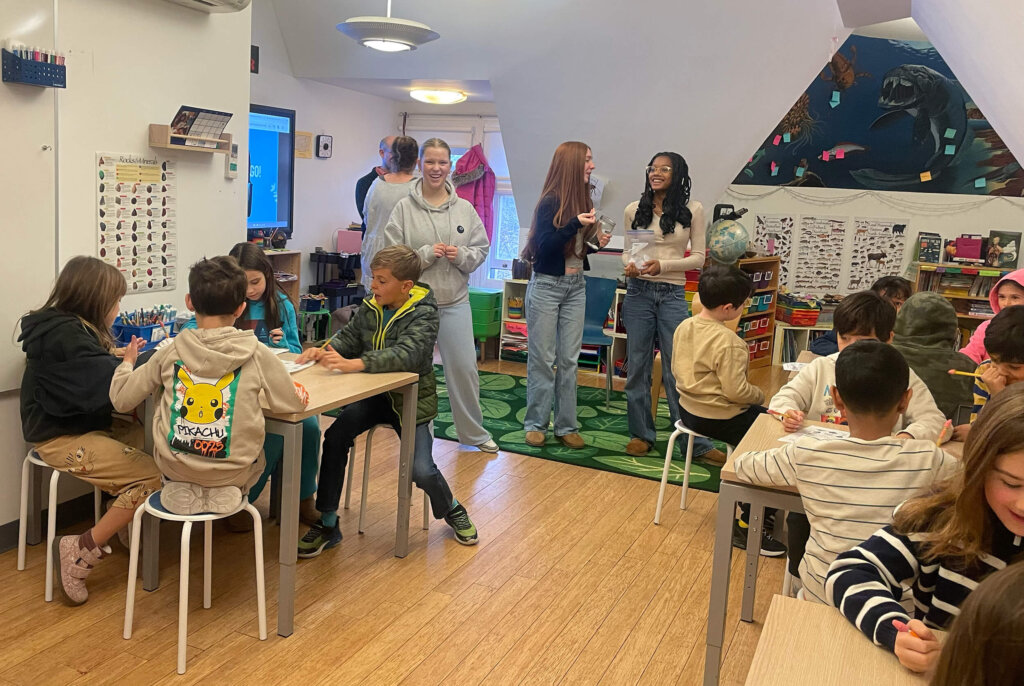
Learning and Sharing Together
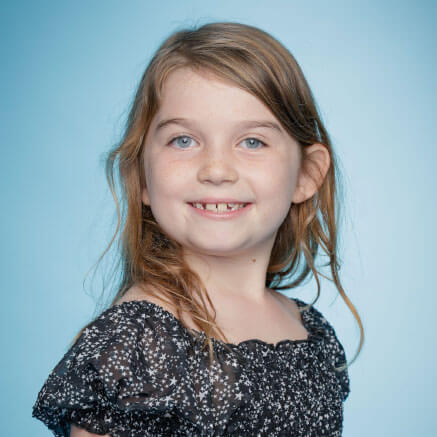
Each third grader serves as an ambassador and works collaboratively to explore environmental concepts as part of their science curriculum. Topics include earth and space science, physics, life science, and sustainability, and aims to foster curiosity, inspire discovery, and encourage students to care for the world around them. The Grade 3 sustainability unit, a key part of the curriculum, evolves each year with new focuses and projects. Now in its second year, the visit by Upper School SLT leaders featured a presentation on composting that covered its definition, significance, and what materials qualify as compost (and those that don’t). Lower School students excitedly absorbed the information. “I learned to compost things I never would have thought of composting,” said Grade 3 student Portia S. ‘34. Together, the Upper and Lower School students played a composting bingo game and discussed Ecobricks, a sustainable method of repurposing plastic waste.
Ecobrick Project
Grade 3 students eagerly shared their own sustainability projects with their Upper School peers, including their progress on their Ecobricks project. These tightly packed plastic bottles filled with cleaned, used plastic materials are repurposed into new structures like modular units, or even garden features. The Lower School, under the guidance of science teacher Carmen Dreyer, is currently constructing an Ecobrick stool using bottles filled with 80 cleaned and compressed snack wrappers each.
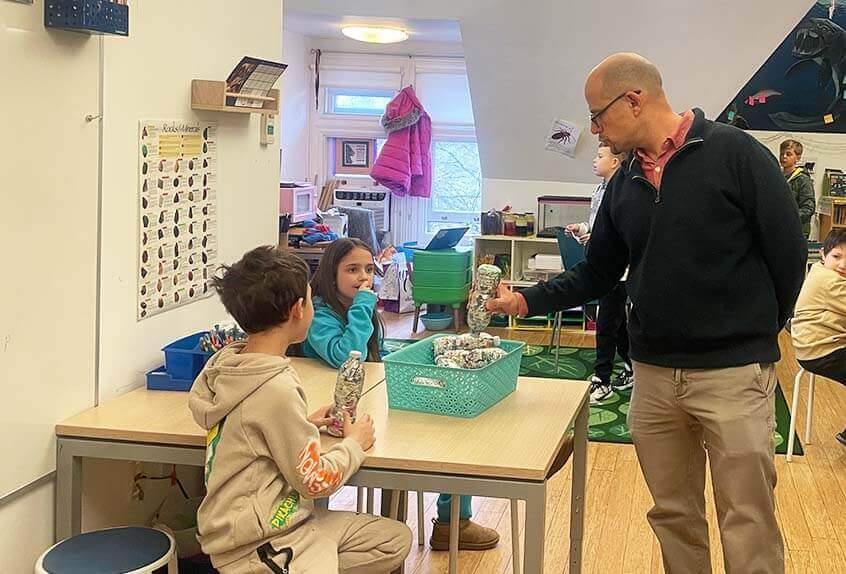
Ecobricks offer an accessible way to divert plastic waste from landfills and prevent it from breaking down into harmful toxins and microplastics. By avoiding high-energy, high-emission industrial recycling processes, they serve as a low-impact alternative for plastic reuse. Through hands-on sustainability projects like these, students gain a deeper understanding of environmental challenges and explore regenerative solutions.
Impact of Collaboration
Dreyer reflected on the impact of the collaboration, emphasizing its value for students of all ages. “One of the most meaningful aspects of this experience is showing students that sustainability work isn’t limited to a particular grade or division,” Dreyer said. “The younger students admire the older ones—not just for what they know, but for the glimpse they provide into what’s ahead in Upper School. They see that the science concepts we study have real-world applications, and they take pride in their own work with Ecobricks as they teach the older students about it.”
